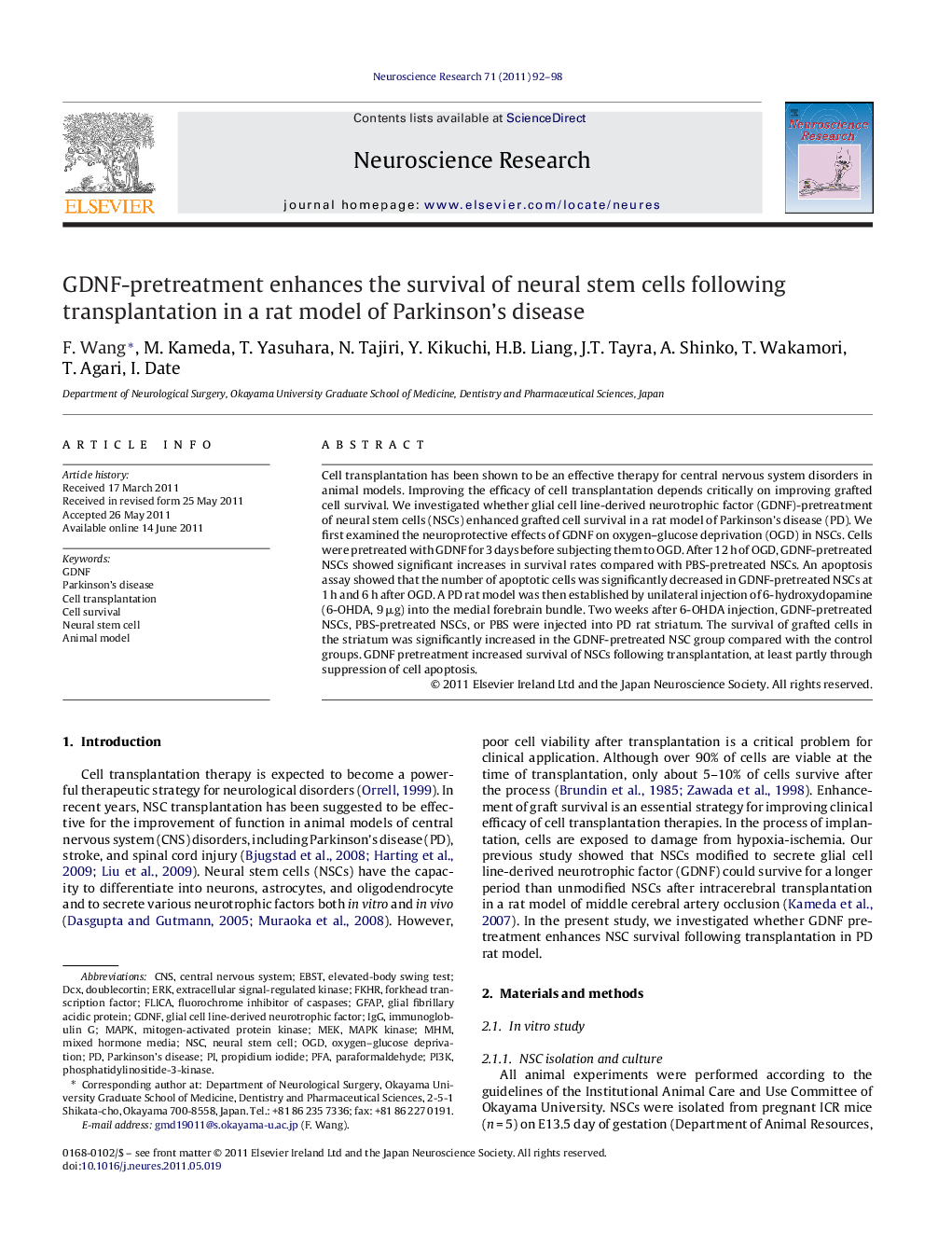| Article ID | Journal | Published Year | Pages | File Type |
|---|---|---|---|---|
| 4351927 | Neuroscience Research | 2011 | 7 Pages |
Cell transplantation has been shown to be an effective therapy for central nervous system disorders in animal models. Improving the efficacy of cell transplantation depends critically on improving grafted cell survival. We investigated whether glial cell line-derived neurotrophic factor (GDNF)-pretreatment of neural stem cells (NSCs) enhanced grafted cell survival in a rat model of Parkinson's disease (PD). We first examined the neuroprotective effects of GDNF on oxygen–glucose deprivation (OGD) in NSCs. Cells were pretreated with GDNF for 3 days before subjecting them to OGD. After 12 h of OGD, GDNF-pretreated NSCs showed significant increases in survival rates compared with PBS-pretreated NSCs. An apoptosis assay showed that the number of apoptotic cells was significantly decreased in GDNF-pretreated NSCs at 1 h and 6 h after OGD. A PD rat model was then established by unilateral injection of 6-hydroxydopamine (6-OHDA, 9 μg) into the medial forebrain bundle. Two weeks after 6-OHDA injection, GDNF-pretreated NSCs, PBS-pretreated NSCs, or PBS were injected into PD rat striatum. The survival of grafted cells in the striatum was significantly increased in the GDNF-pretreated NSC group compared with the control groups. GDNF pretreatment increased survival of NSCs following transplantation, at least partly through suppression of cell apoptosis.
► Neural stems cells were transplanted into a rat model of Parkinson's disease. ► Neural stem cells were subjected to hypoxia/glucose deprivation. ► GDNF pretreatment increased survival of neural stems cells after transplantation. ► Grafted cells showed immunoreactivity for Nestin, GFAP, and Dcx markers. ► Pretreatment may be a safe and economical way to enhance grafted cell survival.
